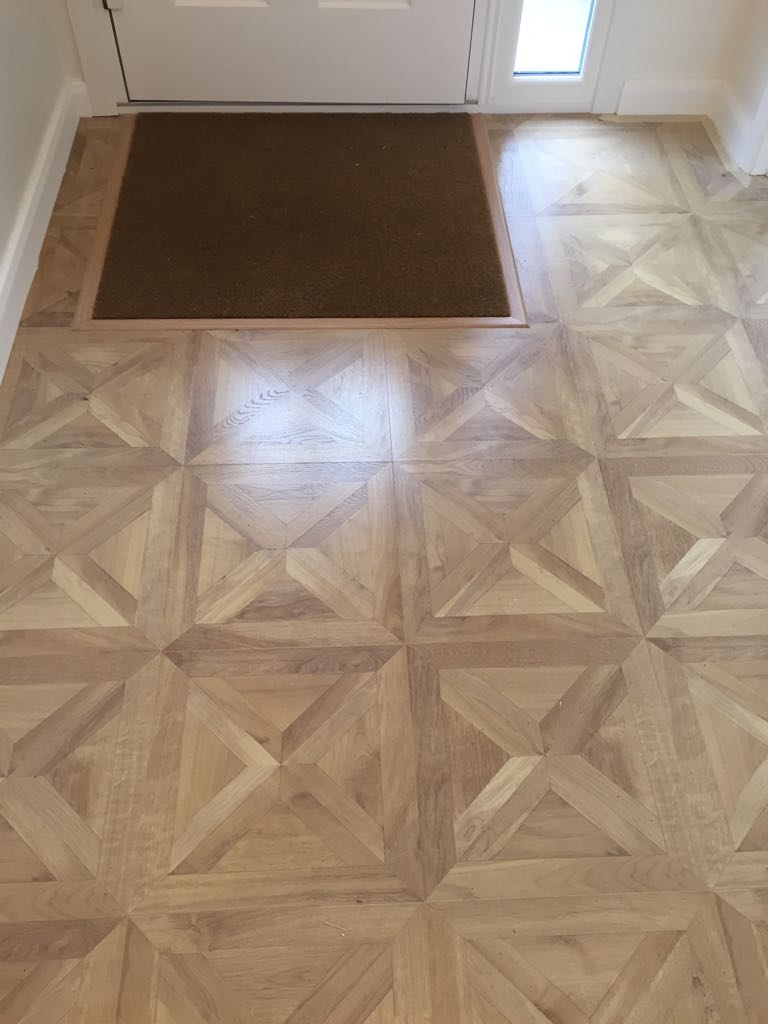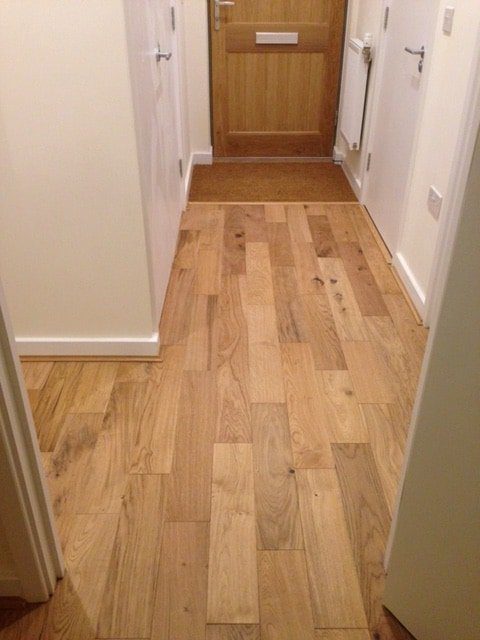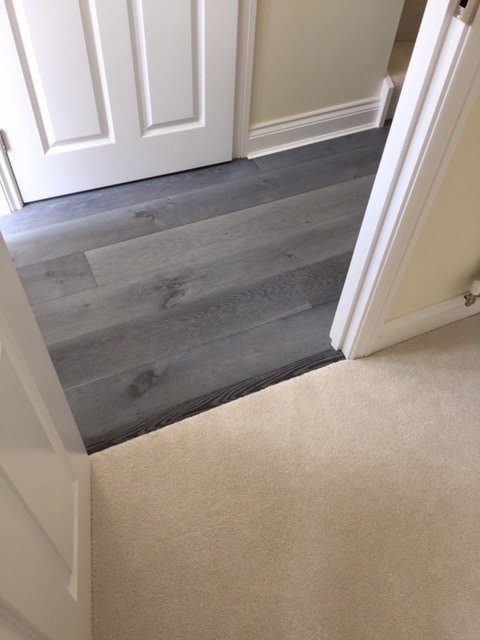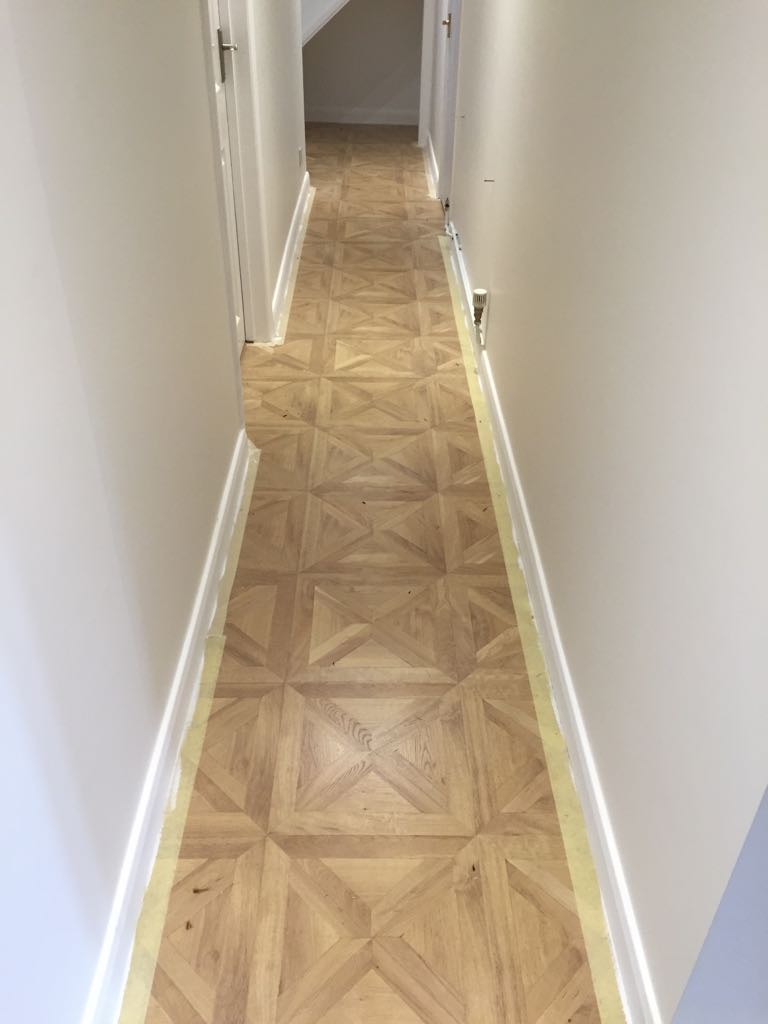Wood – Solid Hardwood & Engineered Wood
What is the difference between solid hardwood flooring (‘real wood’) and engineered wood flooring?
Real Wood Flooring:
- Material: Solid hardwood flooring is made entirely from a single piece of natural hardwood, such as oak, maple, or cherry.
- Thickness: Solid hardwood is typically thicker than engineered wood, usually ranging from 3/4 inch to 5/16 inch.
- Installation: It is usually nailed or stapled down to a wooden subfloor, and it can also be glued directly to the subfloor.
- Durability: Solid hardwood is highly durable and can be refinished multiple times over its lifespan, making it a long-term investment.
- Moisture Sensitivity: Solid hardwood is more susceptible to moisture damage, so it’s not recommended for areas with high humidity or potential for water exposure.
- Appearance: The surface of real wood flooring is made entirely of the natural wood species, showcasing the unique grain patterns and character of the wood.
Engineered Wood Flooring:
- Material: Engineered wood flooring consists of multiple layers. The top layer is a thin veneer of real hardwood, while the lower layers are typically made of plywood or high-density fiberboard (HDF).
- Thickness: Engineered wood is thinner than solid hardwood, with the top veneer typically ranging from 1/16 inch to 1/8 inch.
- Installation: Engineered wood can be installed using various methods, including glue-down, nail-down, or floating (click-lock) installation.
- Durability: While engineered wood is durable, it generally cannot be refinished as many times as solid hardwood due to the thinner veneer layer.
- Moisture Resistance: Engineered wood is more resistant to moisture and temperature fluctuations compared to solid hardwood, making it suitable for a broader range of environments.
- Appearance: The top veneer of engineered wood is real hardwood, so it offers the same aesthetic appeal as solid hardwood, with various wood species and finishes available.
In summary, the primary difference between real wood (solid hardwood) and engineered wood lies in their construction. Real wood is made entirely of natural hardwood, while engineered wood combines a thin hardwood veneer with multiple layers of plywood or HDF. Engineered wood is often chosen for its versatility and suitability in areas with moisture concerns, while real wood is valued for its timeless beauty and potential for multiple refinishing.
What are the benefits of wood installation?
- Aesthetic Appeal: Wood flooring adds a timeless and elegant look to any space, enhancing the overall aesthetics of a room.
- Durability: High-quality wood flooring can last for decades or even longer with proper care, making it a long-term investment for your customers.
- Easy Maintenance: Wood flooring is relatively easy to clean and maintain, requiring regular sweeping and occasional polishing or refinishing.
- Resale Value: It can increase the resale value of a property, making it a desirable option for homeowners looking to invest in their homes.
- Hypoallergenic: Unlike carpets, wood flooring doesn’t trap allergens, making it a healthier choice for those with allergies.
- Versatility: Wood flooring can be used in various design styles, from traditional to modern, offering flexibility in design choices.
What are the disadvantages of wood installation?
- Cost: Wood flooring can be more expensive upfront compared to other flooring options like carpet or laminate.
- Vulnerability to Moisture: Wood is susceptible to moisture damage, so it’s not suitable for rooms with high humidity, such as bathrooms, unless treated appropriately.
- Hardness: Some types of wood are more susceptible to scratches and dents than others, which can be a concern in high-traffic areas.
- Temperature Sensitivity: Wood can expand or contract with changes in temperature and humidity, which may require climate control measures in some environments.
- Environmental Impact: Depending on the source, the production of wood flooring can have environmental implications.





